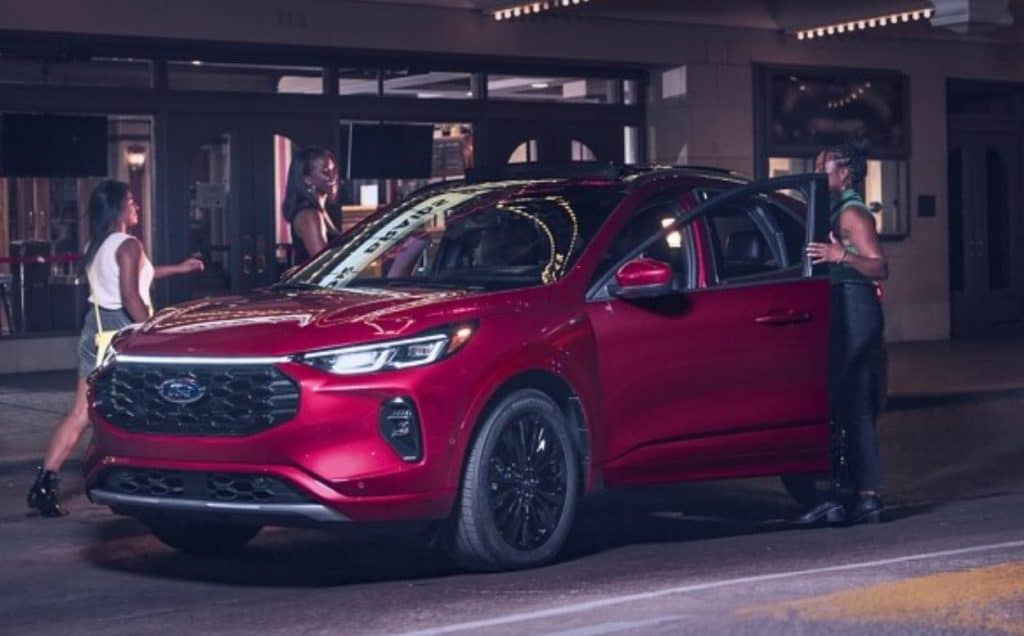
The Ford Escape, Honda CR-V, Mitsubishi Outlander and Subaru Forester earn the highest rating of superior, while the Mazda CX-5, Toyota RAV4 and Volkswagen Taos are rated advanced. The Hyundai Tucson earns a basic rating.
“Since 2018, new vehicles have been required to come with a rear camera that makes it easier to see where you’re going when you’re backing up,” IIHS President David Harkey said. “Rear automatic emergency braking systems aren’t required, making the feature far less common. That’s too bad because our research consistently shows that technology that intervenes on behalf of the driver is more effective in preventing crashes than other types of solutions.”
IIHS first tested rear crash prevention systems in 2018 and has periodically added to the ratings since then.
The rating scale includes ratings of basic, advanced and superior. Vehicles that only have parking sensors that issue warnings, rear cross-traffic alert or both earn a basic rating. For vehicles with rear automatic emergency braking (AEB), the rating is determined by how their systems perform in three tests using a passenger vehicle target with different approach angles and one test using a bollard representing a pole or garage pillar.
Tests with a pedestrian dummy are not included because the ultrasonic sensors used by most of today’s rear AEB systems aren’t designed to detect people — though they sometimes do.
The complete evaluation comprises 24 test runs conducted at 4 mph, with some scenarios weighted more heavily than others. Systems are assigned points based on the number of runs that either avoid the target or reduce speeds to less than 1 mph before hitting it.
Though the low-speed crashes that rear AEB addresses don’t typically cause serious injuries, they can result in thousands of dollars in damage. Nearly 30% of collision claims in calendar year 2022 were for rear points of impact costing over $4,000, figures from the IIHS-affiliated Highway Loss Data Institute (HLDI) show. In contrast, rear AEB costs as little as $600 as an optional feature on some vehicles.
It’s also remarkably effective.
HLDI evaluations of rear AEB show that the feature slashes the frequency of claims for damage to other vehicles by 29% and reduces the frequency of claims for damage to policyholders’ vehicles by 9%.
An IIHS study found that rear cameras, parking sensors and rear AEB combined reduced the incidence of police-reported backing crashes by a whopping 78%, while rear cross-traffic alert alone reduced such collisions by 22%.
“Rear AEB probably offers the biggest bang for the buck of any of the crash avoidance systems we monitor,” said HLDI Senior Vice President Matt Moore. “The cost of parking lot fender benders really adds up.”
But not all rear AEB systems are equally effective, the latest round of IIHS tests demonstrates.
“The rear AEB evaluation is designed to test how well these systems prevent the most common backing crashes,” said David Aylor, vice president of active safety at IIHS. “These are challenging scenarios in which a pole or another vehicle is behind you and off to the side. Meanwhile, you are backing up and sometimes turning at the same time.”
Among the four superior-rated vehicles, the Escape avoided collisions consistently in all four of the test scenarios, hitting the passenger car target in only one trial with it positioned at a 10-degree angle to the vehicle’s backward path.
The Forester avoided collisions in all scenarios except the one in which the test vehicle reverses toward a passenger car target positioned at a 45-degree angle.
The CR-V and the Outlander avoided collisions when the offset vehicle target was positioned in line with their backing path. However, they both made contact with the target when it was positioned at a 45-degree and 10-degree angle. The CR-V also hit the bollard in one of three test runs, though it slowed substantially.
The angled targets were most challenging for the lower-rated vehicles as well.
The advanced-rated CX-5, RAV4 and Taos hit the passenger car target without slowing substantially in all the trials when it was angled at 10 degrees and often when it was angled at 45 degrees. The CX-5 and Taos also had trouble avoiding the offset bollard, though the RAV4 avoided a collision in two of three trials and slowed substantially in the third.
The basic-rated Tucson failed to slow or avoid a collision in any of the scenarios. However, it did provide a warning as the vehicle neared the target in some instances.
While rear AEB is becoming more common, it’s still not as ubiquitous as front AEB, which automakers agreed to make standard on nearly all new models as part of a voluntary commitment brokered by IIHS and the National Highway Traffic Safety Administration. Rear AEB was standard on only 23% of model year 2023 passenger vehicles and only available as an option on another 32%. At the current growth rate, most vehicles in the U.S. fleet won’t have it until nearly 2050, a HLDI analysis shows.
Among the small SUVs tested, the feature is standard on the Outlander and optional on the other seven models.